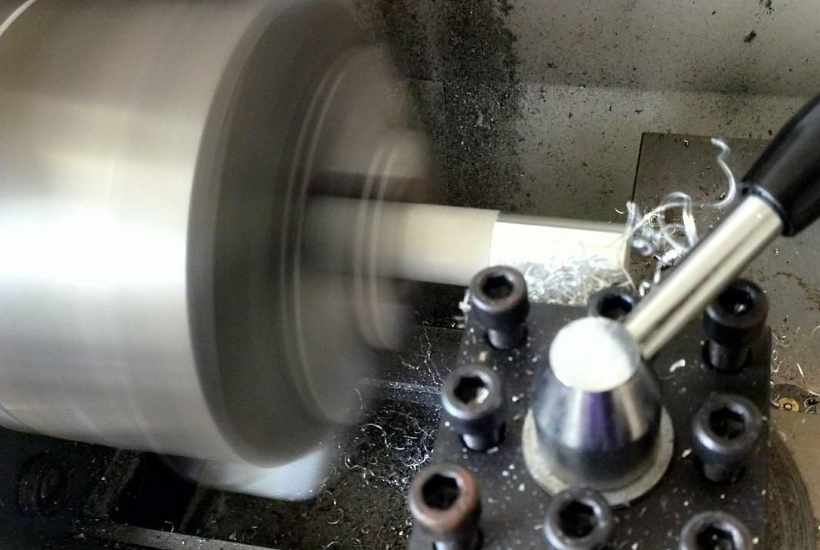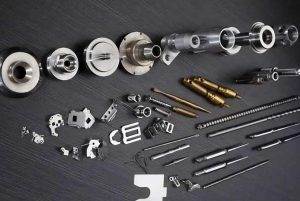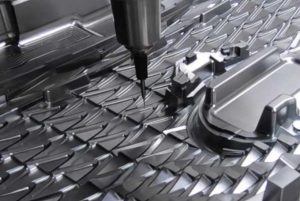Machining refers to the process of changing the external dimensions or properties of a workpiece through mechanical equipment. According to the difference in processing methods, it can be divided into cutting processing and pressure processing. Several commonly used machining methods include turning, milling, planing, broaching, grinding, drilling, and boring.
1. Turning (vertical turning, horizontal turning, and other types): The main characteristic is machining rotary parts. There are mainly two forms of turning: one is to fix the tool and machine the unfinished workpiece during rotation; in turning and milling machining centers, turning and milling are combined. The other is to fix the workpiece, and through the high-speed rotation of the workpiece, the lateral and longitudinal movement of the turning tool (tool holder) is used for precision machining. The figure below shows turning in a turning and milling machining center.
2. Milling (vertical milling, horizontal milling are both applicable): Milling is to fix the blank and use a high-speed rotating milling cutter to cut out the required shape and features on the blank. Traditional milling is mostly used for milling contours and slots and other simple external features. The main characteristic is machining slots and straight-line surfaces, and of course, it can also be used for two-axis or three-axis linked machining of curved surfaces.
3. Planing (various types of planers): A planer is a straight-line moving machine tool that uses a planer tool to shave the surface, groove, or formed surface of a workpiece. When using a planer for machining, the tool is relatively simple, but the productivity is low (except for machining long and narrow surfaces), so it is mainly used for single-piece and small-batch production and machine repair workshops, and is often replaced by milling machines in mass production. The main characteristic is machining straight-line surfaces, and generally, the surface roughness is not as high as that of milling machines.
4. Broaching (suitable for arcs): Metal cutting processing used to process slot-like features. During processing, the workpiece on the worktable performs longitudinal, transverse, or rotational motion, while the broach performs reciprocating motion up and down, cutting the workpiece. It can be understood as a standing planer and is very suitable for non-complete arc processing. Broaching is commonly used in gear machining.
5. Grinding (external cylindrical grinding, surface grinding, internal hole grinding, tool grinding, etc.): High-precision surface machining, grinding (grinding) is also called grinding. Grinding is to use grinding wheels, oil stones, and abrasives (alumina, silicon carbide, etc.) to cut the surface of the workpiece.
6. Drilling (various holes): Commonly used for hole machining, usually the drill rotates as the main motion, and the axial movement of the drill is the feed motion. The machining accuracy is relatively low, and it can drill through holes, blind holes, change special tools to expand or counterbore holes, ream holes, or perform tapping and other machining. During the machining process, the workpiece remains stationary, allowing the tool to move, aligning the center of the tool with the center of the hole, and rotating the tool (main motion).
7. Boring (high precision): Machining of holes with large diameters and high precision, and machining of large workpiece shapes. It mainly uses a boring tool to bore the pre-made holes of the workpiece. Usually, the boring tool rotates as the main motion, and the movement of the boring tool or the workpiece is the feed motion. It is mainly used for machining high-precision holes or finishing multiple holes in one positioning. In addition, it can also engage in the machining of other surfaces related to hole finishing.
In addition to the commonly used machining methods introduced above, there are also sawing, machining centers, turning and milling centers, electrical discharge machining, wire cutting, thread cutting machines, etc.



